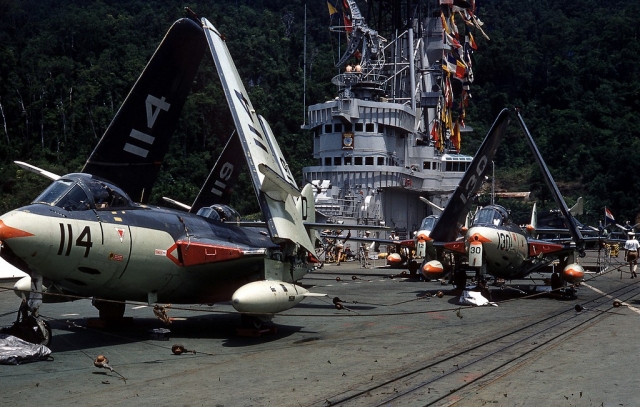Images of the past
Thanks to the “Stichting Papoea Erfgoed” (Papua Heritage Foundation) a lot of photo material on the former Dutch colony of New Guinea (now as Papua/Pulau Irian and West-Papua/Papua Barat provinces of Republic Indonesia) has been saved. The Foundation has kindly permitted Scramble to publish its historic photos which give a fascinating view on aviation in the past in this (for most of us) unknown part of the world.
Although the Republic of Indonesia had declared its independence in 1945, it took until 27 December 1949 before the Dutch accepted the sovereignty of its former colony. But while accepting this, the western part of the island of New Guinea was intended to remain part of the Kingdom of the Netherlands.
In the late Fifties plans were made for independence, but Indonesia had other ideas. Frequent incursions of Indonesian troops on New Guinean soil were aimed at provoking an up rise of the native population against the Dutch. And so the Dutch Government responded by sending a convoy consisting of aircraft carrier “Karel Doorman” and two supporting destroyers which left Holland on 30 May 1960.
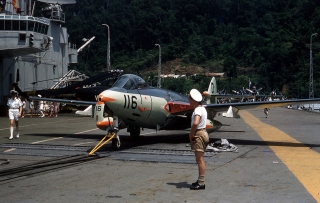
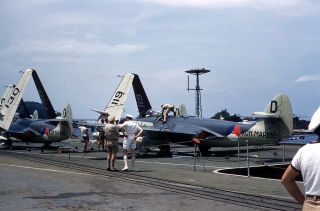
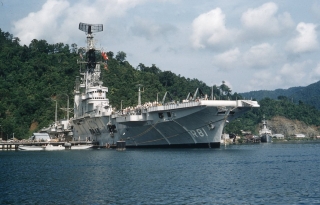
Marine Luchtvaart Dienst (MLD, Royal Netherlands Navy) 860 squadron had its Hawker Sea Hawk FGA50 fighters on board of the Dutch carrier. Twenty of these jets were delivered to the Netherlands and flown by both 860 and later 3 squadron. The type was withdrawn from use in December 1964.
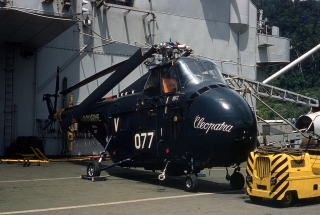 During launches from the carrierdeck, a Sikorsky S-55 helicopter was always hovering next to the ship on stand-by for emergencies. The No. 8 squadron of the Marine Luchtvaart Dienst employed three of these helicopters of which 077 “Cleopatra” was one. It was written off on 28 February 1962. The others were 076 “Salome” and 078 “Delilah”. The sole one to survive is 076 which is part of the Aviodrome collection in Lelystad, the Netherlands.
During launches from the carrierdeck, a Sikorsky S-55 helicopter was always hovering next to the ship on stand-by for emergencies. The No. 8 squadron of the Marine Luchtvaart Dienst employed three of these helicopters of which 077 “Cleopatra” was one. It was written off on 28 February 1962. The others were 076 “Salome” and 078 “Delilah”. The sole one to survive is 076 which is part of the Aviodrome collection in Lelystad, the Netherlands.
Next to the Sea Hawk fighters, the “Karel Doorman” was also equipped with a squadron of Grumman TBM-3S2 Avenger torpedo-bombers. The Royal Netherlands Navy operated 34 of these Avengers together with 24 anti-submarine radar TBM-3W2s. In 1958 twenty additional TBM-3Es were obtained from the British Royal Navy, of which only eleven were flown and the remaining used for spares.
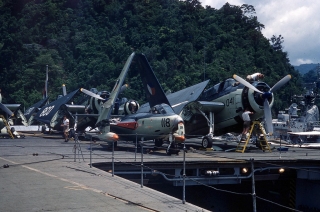
 In the years 1960 to 1962 international pressure on the Netherlands increased. Indonesia, strongly supported by the Soviet Union, regularly claimed lawful rights to New Guinea.
In the years 1960 to 1962 international pressure on the Netherlands increased. Indonesia, strongly supported by the Soviet Union, regularly claimed lawful rights to New Guinea.
Initially the Netherlands were backed by their former Allies, but in the end, the United States decided to change their mind. This was obviously an attempt to keep friendly relations with the Republic Indonesia and decrease Communist influence.
So on 15 August 1961, the Government of the Netherlands signed the so-called New York contract in which New Guinea was to become part of the Republic Indonesia. After a period of United Nations administration, the territory became Indonesian as from 1 May 1963.
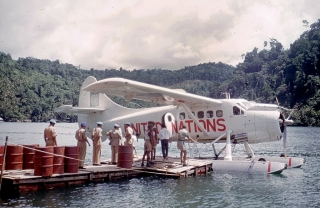 After the Dutch military had left, United Nations forces were present during the period of transition to Indonesian governance. Several countries from around the world contributed to these UN forces. These military (with well-known blue bonnets) have come from Pakistan. They are boarding a float equipped Canadian DeHavilland DHC-3 Otter, RCAF 1239424, at Fakfak in 1962.
After the Dutch military had left, United Nations forces were present during the period of transition to Indonesian governance. Several countries from around the world contributed to these UN forces. These military (with well-known blue bonnets) have come from Pakistan. They are boarding a float equipped Canadian DeHavilland DHC-3 Otter, RCAF 1239424, at Fakfak in 1962.
photos: A.E.M.J. Pans, ter Laag and Ubbink


